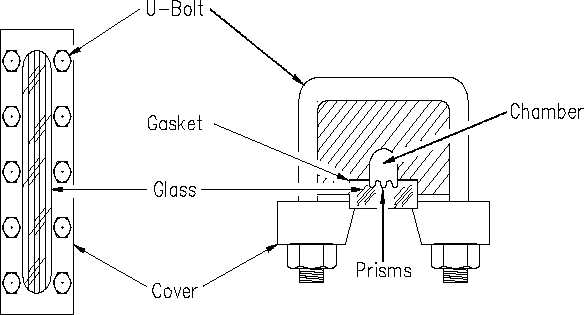Level Detectors
LEVEL DETECTORS
Another type of gauge glass is the reflex gauge glass (Figure 3). In this type, one side of the
glass section is prism-shaped. The glass is molded such that one side has 90-degree angles which
run lengthwise. Light rays strike the outer surface of the glass at a 90-degree angle. The light
rays travel through the glass striking the inner side of the glass at a 45-degree angle. The
presence or absence of liquid in the chamber determines if the light rays are refracted into the
chamber or reflected back to the outer surface of the glass.
Figure 3 Reflex Gauge Glass
When the liquid is at an intermediate level in the gauge glass, the light rays encounter an
air-glass interface in one portion of the chamber and a water-glass interface in the other portion
of the chamber. Where an air-glass interface exists, the light rays are reflected back to the outer
surface of the glass since the critical angle for light to pass from air to glass is 42 degrees. This
causes the gauge glass to appear silvery-white. In the portion of the chamber with the
water-glass interface, the light is refracted into the chamber by the prisms. Reflection of the light
back to the outer surface of the gauge glass does not occur because the critical angle for light
to pass from glass to water is 62-degrees. This results in the glass appearing black, since it is
possible to see through the water to the walls of the chamber which are painted black.
A third type of gauge glass is the refraction type (Figure 4). This type is especially useful in
areas of reduced lighting; lights are usually attached to the gauge glass. Operation is based on
the principle that the bending of light, or refraction, will be different as light passes through
Rev. 0
Page 3
IC-03

